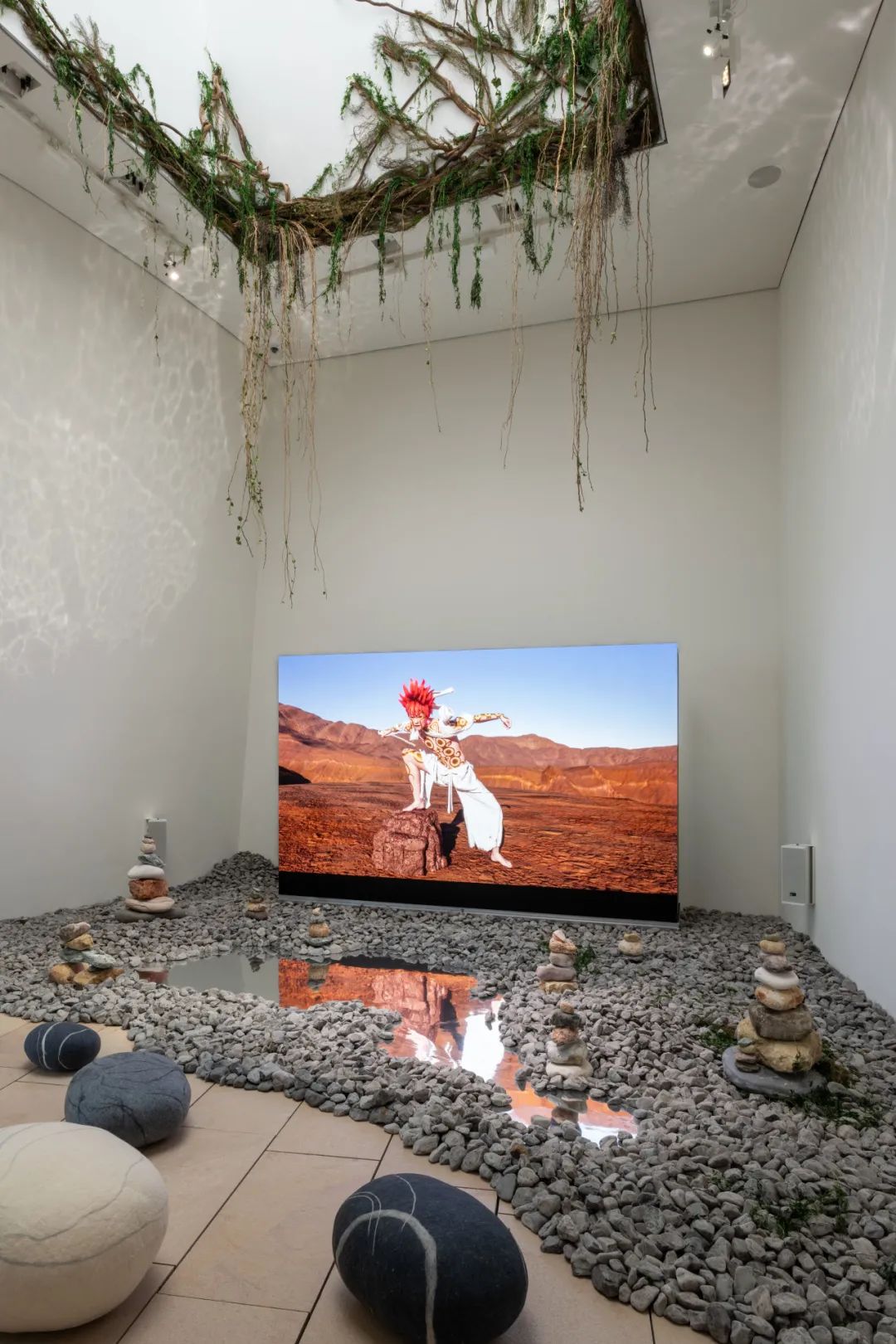
Bizarre, sci-fi, anime, Buddhist philosophy... It's no easy task to describe Lu Yang's work. Since 2015, Lu Yang has used 3D animation and video installations—created by scanning their own facial expressions—to depict a new form of digital world. Recently, DOKU - The Flow, the sequel to Lu Yang's DOKU series, was exhibited at the top floor of Foundation Louis Vuitton in Paris. A few days earlier, at Frieze Seoul, Parcel Tokyo's solo presentation of Lu Yang's work won the Focus Asia Stand Prize. This is an opportunity to revisit their surreal, cybernetic creations infused with Buddhist thought, and to further explore the causality and emptiness of material and spiritual phenomena.
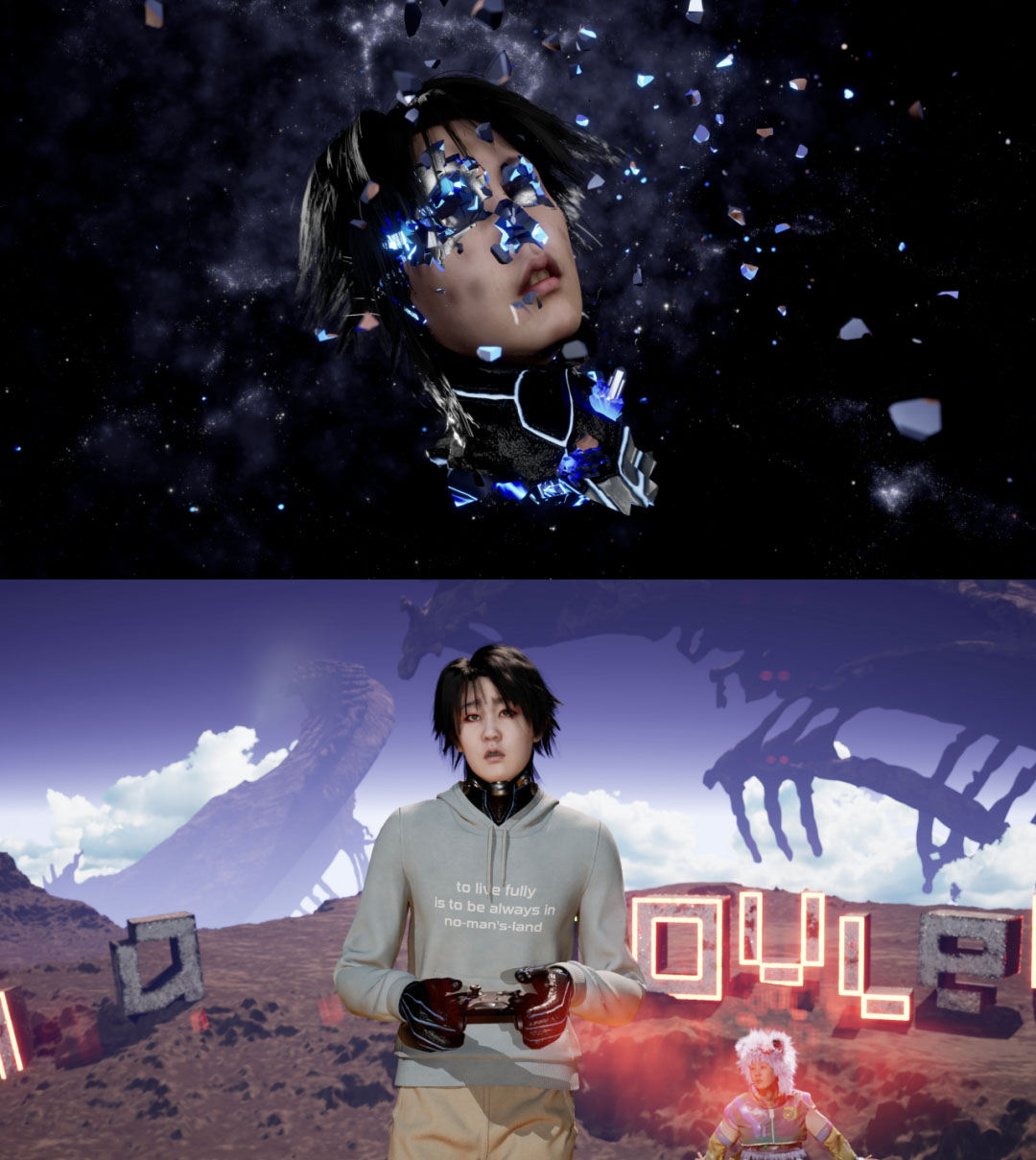
A figure clad in cyber-tech attire dances an ancient, shamanic ritual amidst ruins; another in a gray hoodie sprints through a collapsing city. Meanwhile, "the sky splits, the earth cracks, and people are crushed beneath the houses they built." Soon after, identical figures board a plane soaring through a hazy celestial realm, its fuselage emblazoned with four bold characters: DOKU. This is DOKU - The Self, the narrative-driven digital video that opened the DOKU series, showcased at the 59th Venice Biennale's The Milk of Dreams in 2022.
Inspired by pandemic isolation, the work stems from a dream of the virtual being DOKU, who, while fleeing, seems to experience death—only to awaken and find themself alone on a plane. This heterotopia blends futurism and primal ritualism. The choreography draws from Balinese “Legong”and Indian “Kathakali”dances encountered during Lu Yang's travels, reflecting an interest in humanity's desire to evade death and its intersection with technology.
Those familiar with Lu Yang's oeuvre will recognize their signature in DOKU—a fusion of electronic music, rapid cuts, and psychedelic CGI. Raised on Buddhist texts by their grandparents and trained at the China Academy of Art under Zhang Peili, Lu Yang has long been fascinated by painting and new media. Around 2012, they debuted their first anime style avatar, Uterusman, riding a chariot made of human pelvises, establishing a grotesque cyber-Buddhist visual language that has since defined contemporary new media art. Delusional Mandala (2015) featured a genderless self-image—a baseball-capped figure dancing through cosmic rebirths before floating inside a giant mandala.
The recent DOKU series evolves from this legacy. As a genderless entity, DOKU may also be Lu Yang's digital embodiment of non-binary identity (henceforth referred to with "they/them" pronouns). "When alone, we don’t truly ponder our identity or gender; these are just labels," Lu Yang notes. Virtual avatars can transcend such constructs. Using cutting-edge facial capture, Lu Yang meticulously replicates their own expressions, yet DOKU is also a vessel—an attempt to express universal sentience through one life, rooted in Buddhism'sālaya-vijñāna (a storehouse consciousness that archives all experiences, thoughts, and emotions across endless rebirths).
Art philosopher Taliesin Thomas observes, "Much of Lu Yang's work carries unsettling dark humor and absurdity, but their digital renderings also mirror the spiritual intensity and disillusionment of contemporary life." This is vividly evident in DOKU - The Flow, their latest Foundation Louis Vuitton collaboration. Compared with DOKU - The Self, DOKU gains more new dimensions: crystalline fragments assemble into a human form in cosmic void before landing on Earth, traversing mountains, rivers, and caves etched with religious symbols, flanked by bleached bones.
The piece reimagines humanity's cosmic position and interconnectedness. Virtual worlds offer refuge from real-life nihilism, yet DOKU's wanderings—both escape and self-exploration—provoke questions: What constitutes existence? In spaces where illusion and reality merge, is loneliness amplified or mitigated by digital avatars? Though technology unlocks infinite possibilities, Lu Yang's themes remain grounded in history, society, religion, and geopolitics, treating the digital realm as equally real—and Buddhism as a bridge between both.
Stepping back from the cinematic perspective, the exhibition's installation design evokes the aesthetic of karesansui (dry landscape gardens), reminiscent of Japanese Zen Buddhist gardens that originated in the 14th century. These gardens use white sand, gravel, and moss to symbolize water, while rocks of varying sizes represent mountains, islands, and other natural landscapes. Scattered throughout the space are also mani stone stacks—Tibetan Buddhist prayer mounds symbolizing wishes and blessings, echoing scenes from DOKU - The Flow.
The exhibition space adopts a minimalist palette of gray and white, employing an abstract spatial narrative to guide visitors into a state of meditative tranquility where self and object dissolve. This starkly contrasts with the vividly sci-fi and religious imagery in Lu Yang's video works. The duality mirrors their studios in Shanghai and Tokyo: "My studios are extremely simple, with barely any objects—just rows of work computers," Lu Yang remarks with a laugh. "The entire concept flashes in my mind instantly; I see the complete story, then return to materialize it." Through imagination, they forge a world ex nihilo, then deploy technology to craft new corporeal forms that transcend traditional notions of life and death.

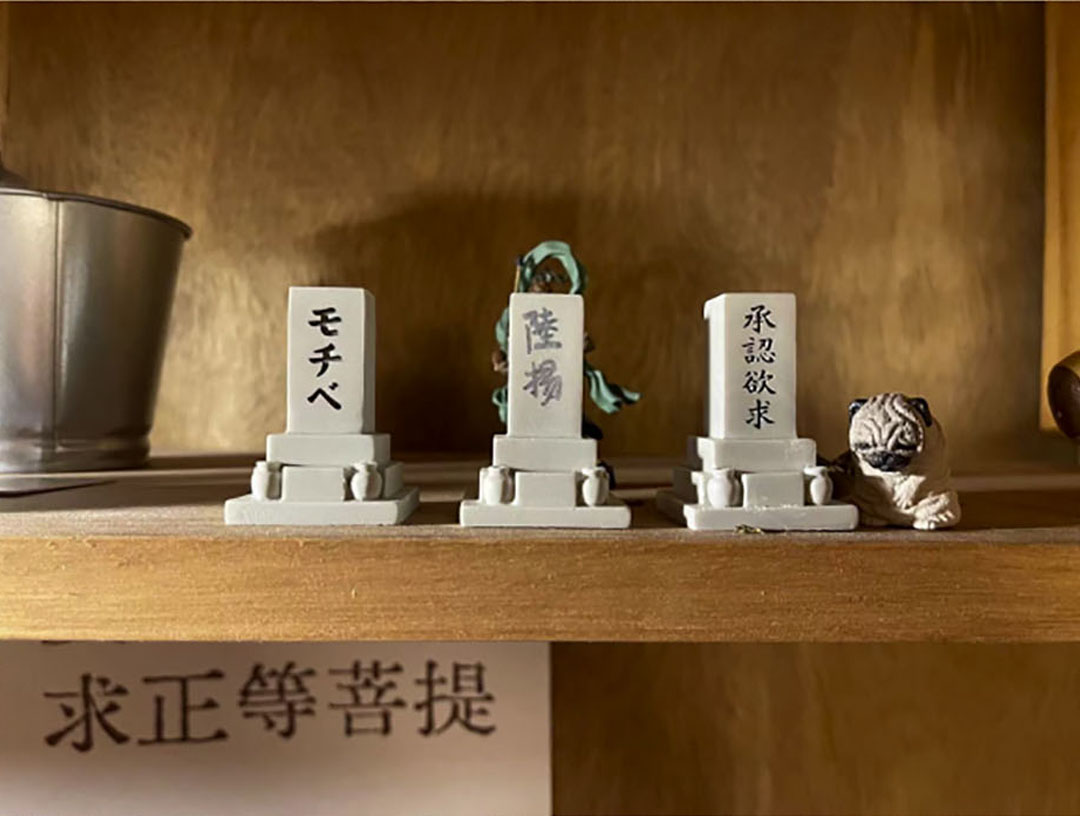
01 Tombstone Gachapon
"A Japanese gachapon tombstone with my name—empty, ready for inscription. I wrote it immediately, with my pug guarding me (a practitioner’s memento mori)."
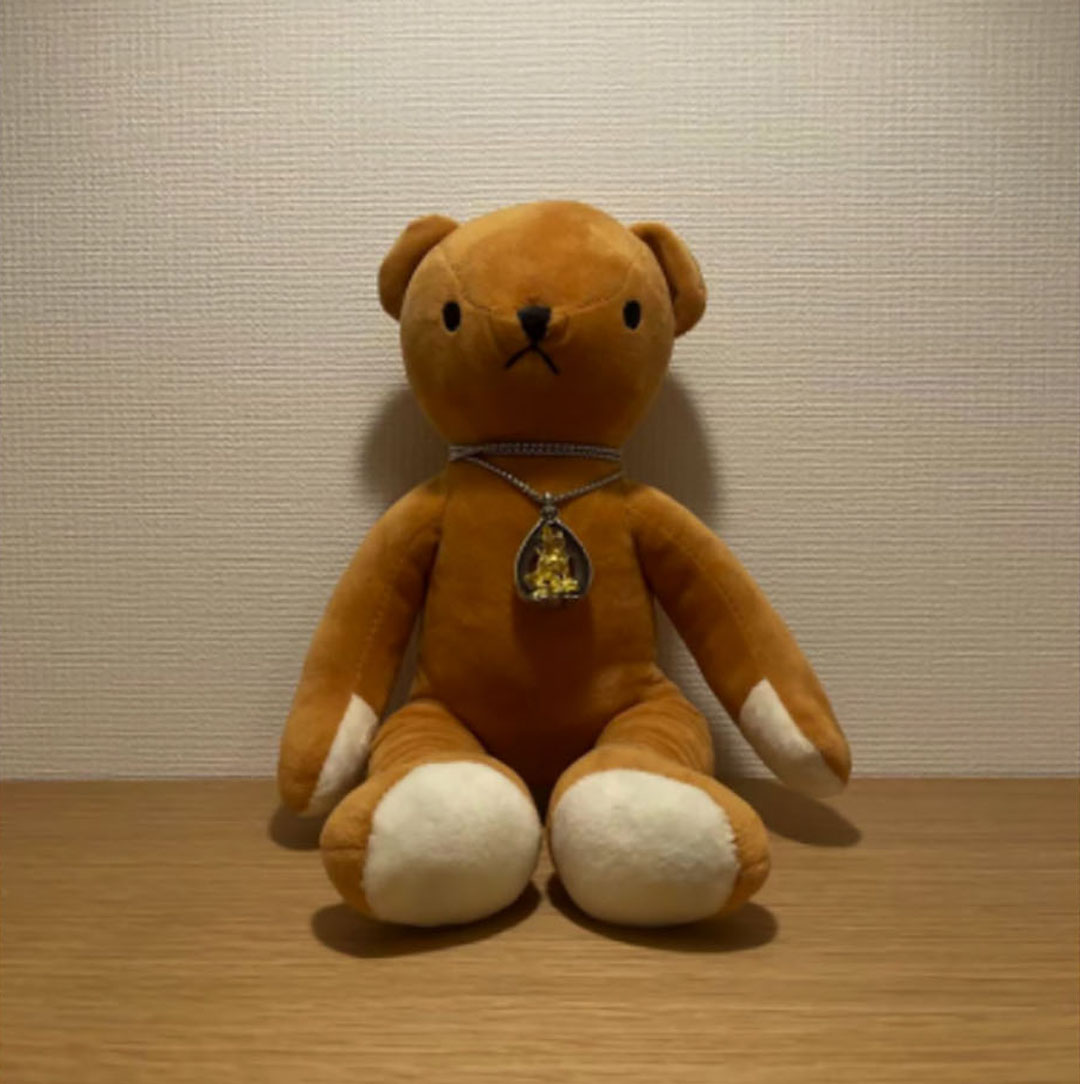
02 Teddy Bear
"A gift from a fellow practitioner, modeled after Dzongsar Khyentse’s bear, wearing Padmasambhava’s necklace."

03 Illusions of Life and Death 《生死的幻觉》
"’པེ་མ་གསརྩང་བློ་གྲོས’白玛格桑法王’s book—the only one I carried when moving to Tokyo. A talisman."
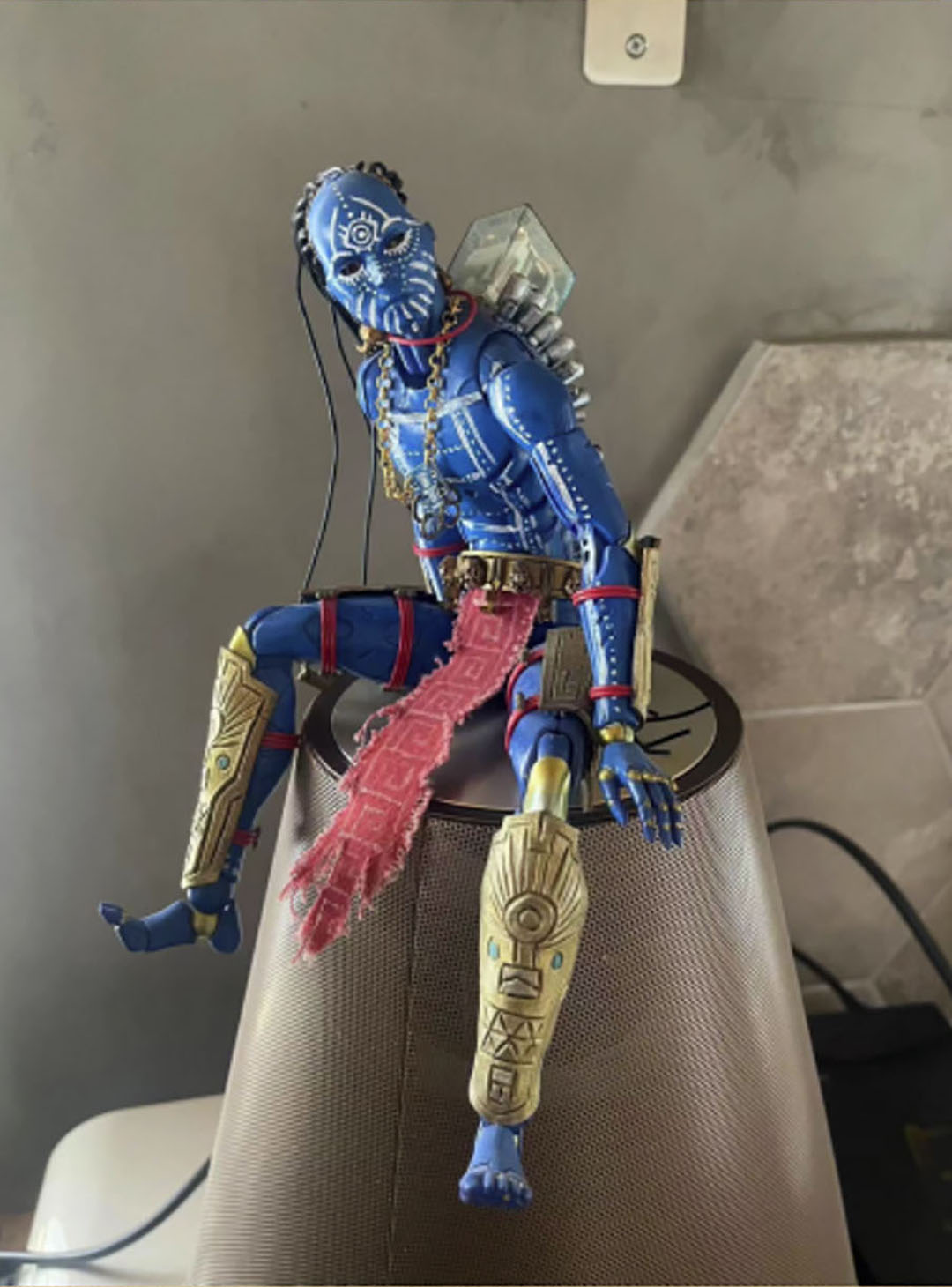
04 Hand-Painted Toy
"Once I was subjected to online abuse on the internet in Taiwan. A supporter from Taiwan named Louiz Tsai came to support and encourage me, and we became friends. He is a toy designer. He combined elements from my works with a Japanese brand (Chikitsuna) company and created this hand-painted toy."
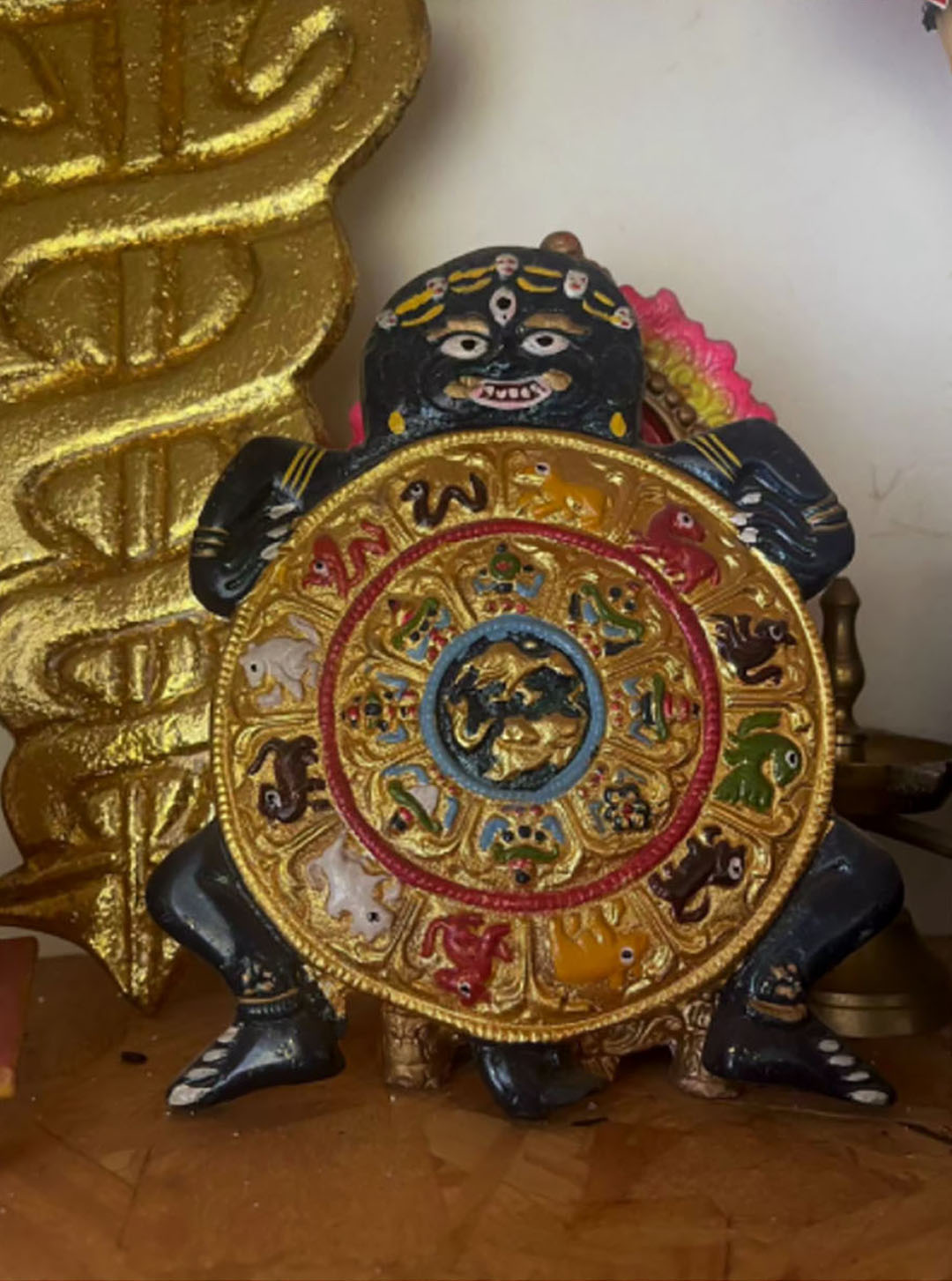
05 Wheel of Life
"Brought back from India—Yama Dharmaraja’s wheel."

06 Handmade Dog
"From the mother of my Japanese host, Yukihisa Hirabayashi "
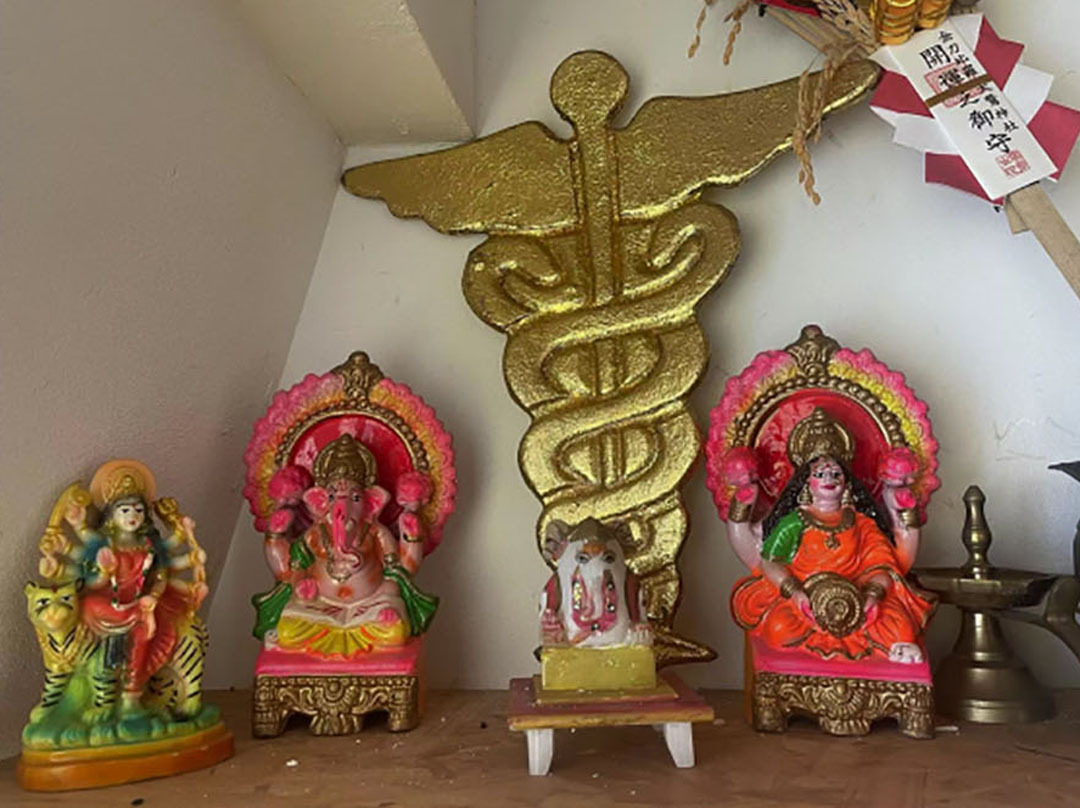
07 Mini Deities
"Parvati and Ganesha figurines from an Indian temple."
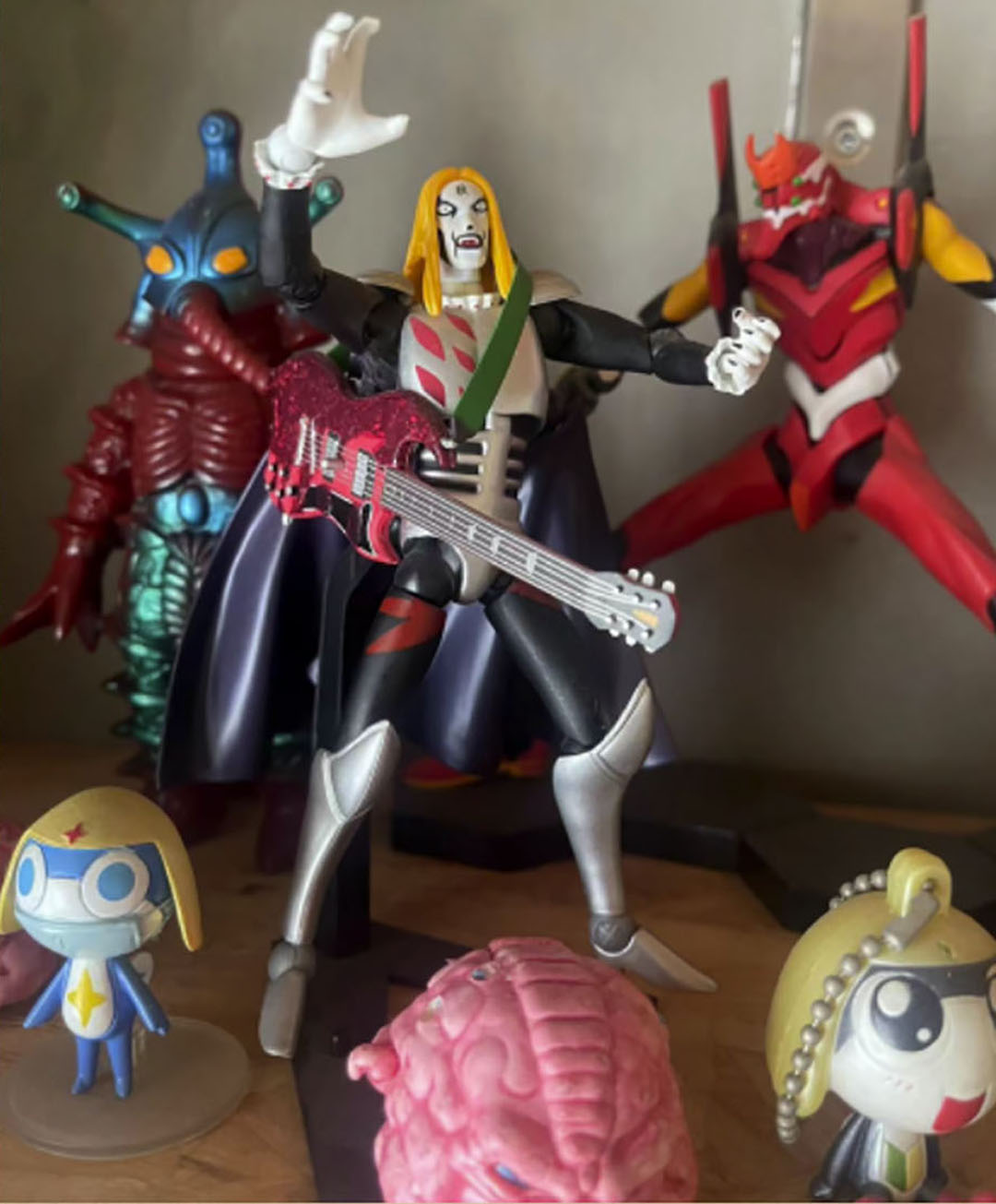
08 Anime Figure
"I really love this animated series! Lord Krauser II in Detroit Metal City It is said that Roppongi Hills is the son born from the mating between him and 东京塔Tokyo Tower. He is the father of Roppongi Hills."
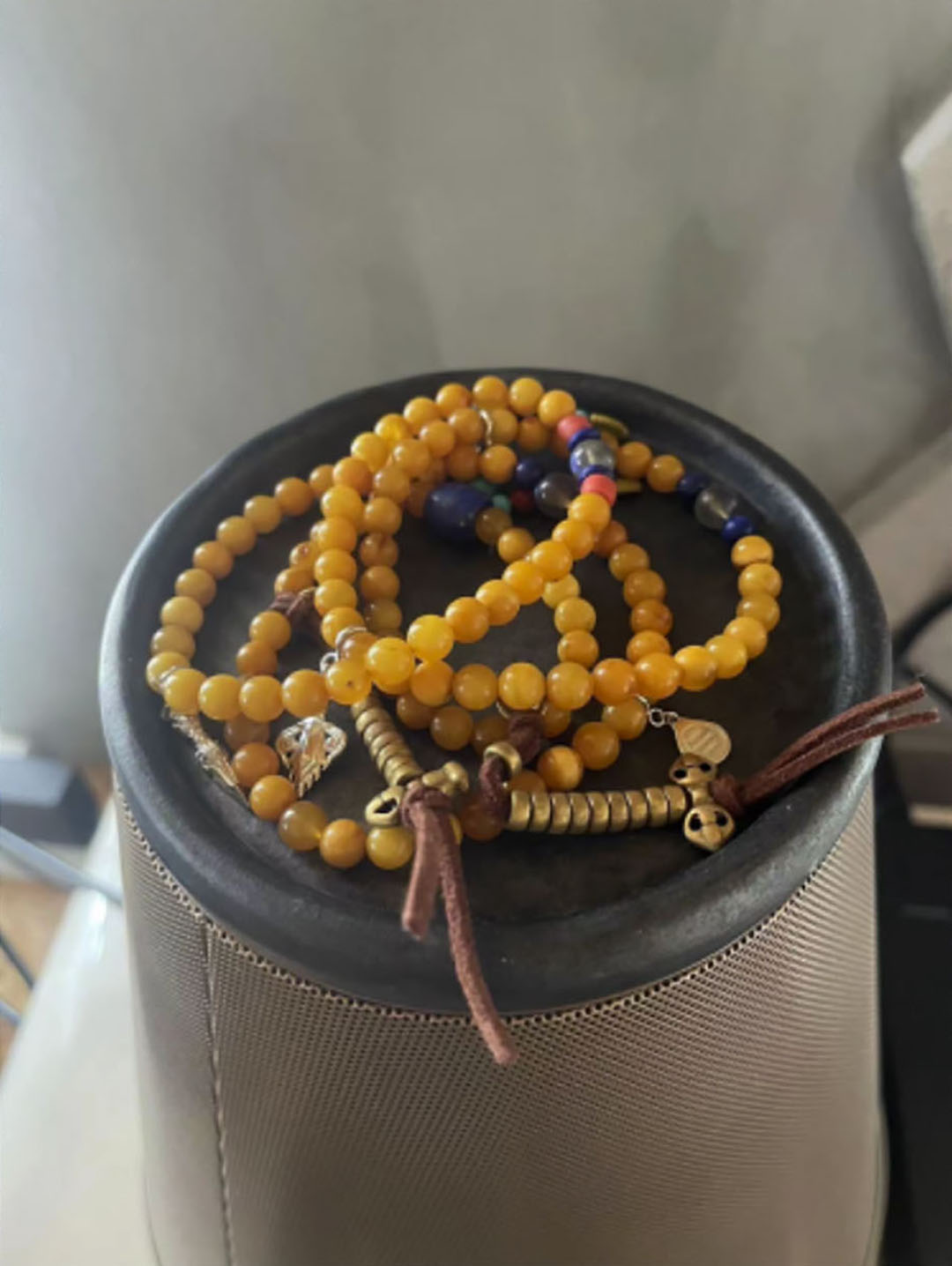
09 Mala Beads
"Passed down by my guru."
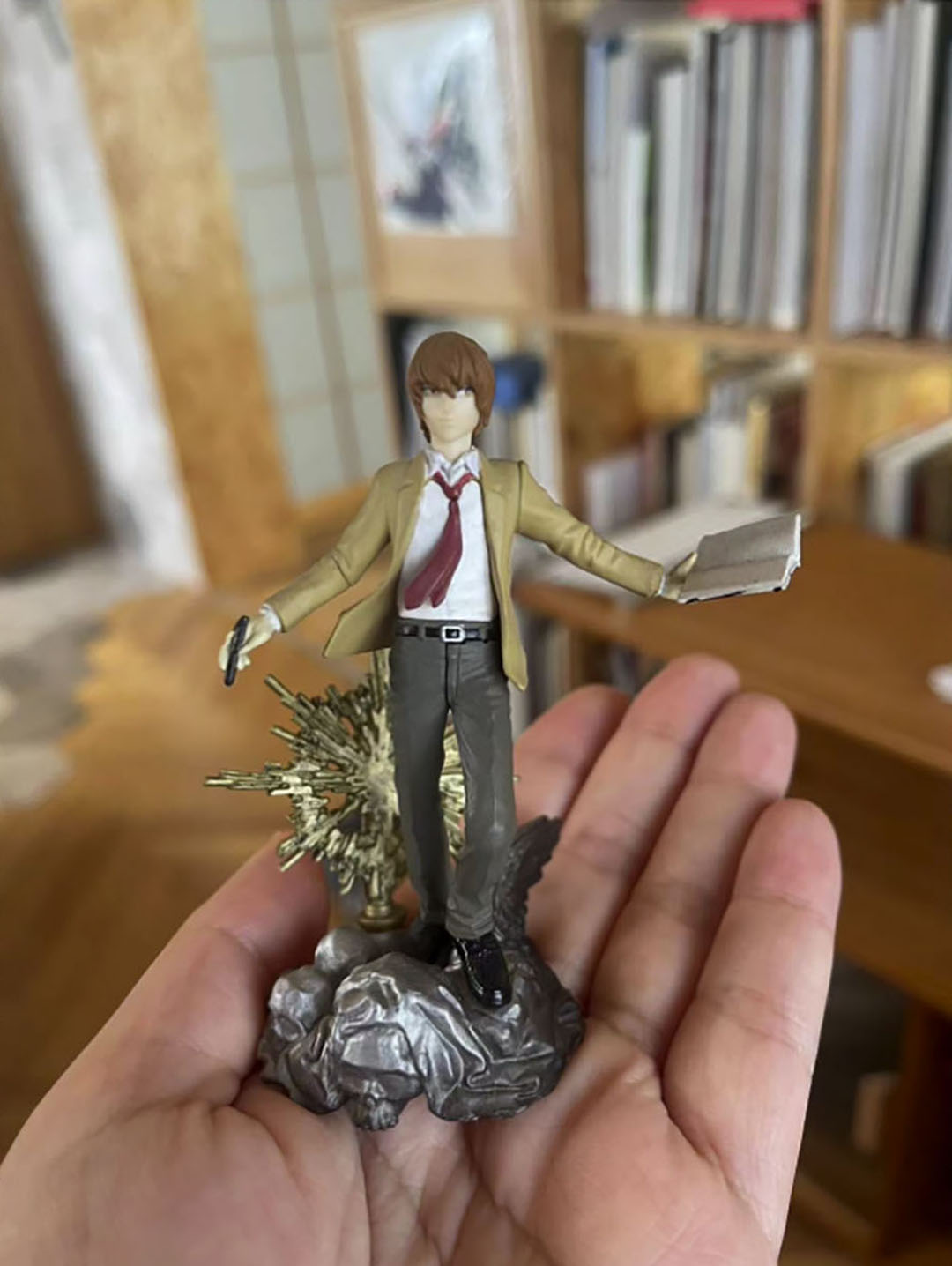
10 Tomb or Figure?
"My idol—Death Note’s Light Yagami."

11 Incense Holder
"A shitala (charnel ground lord) holder from musician friend Li Xin."
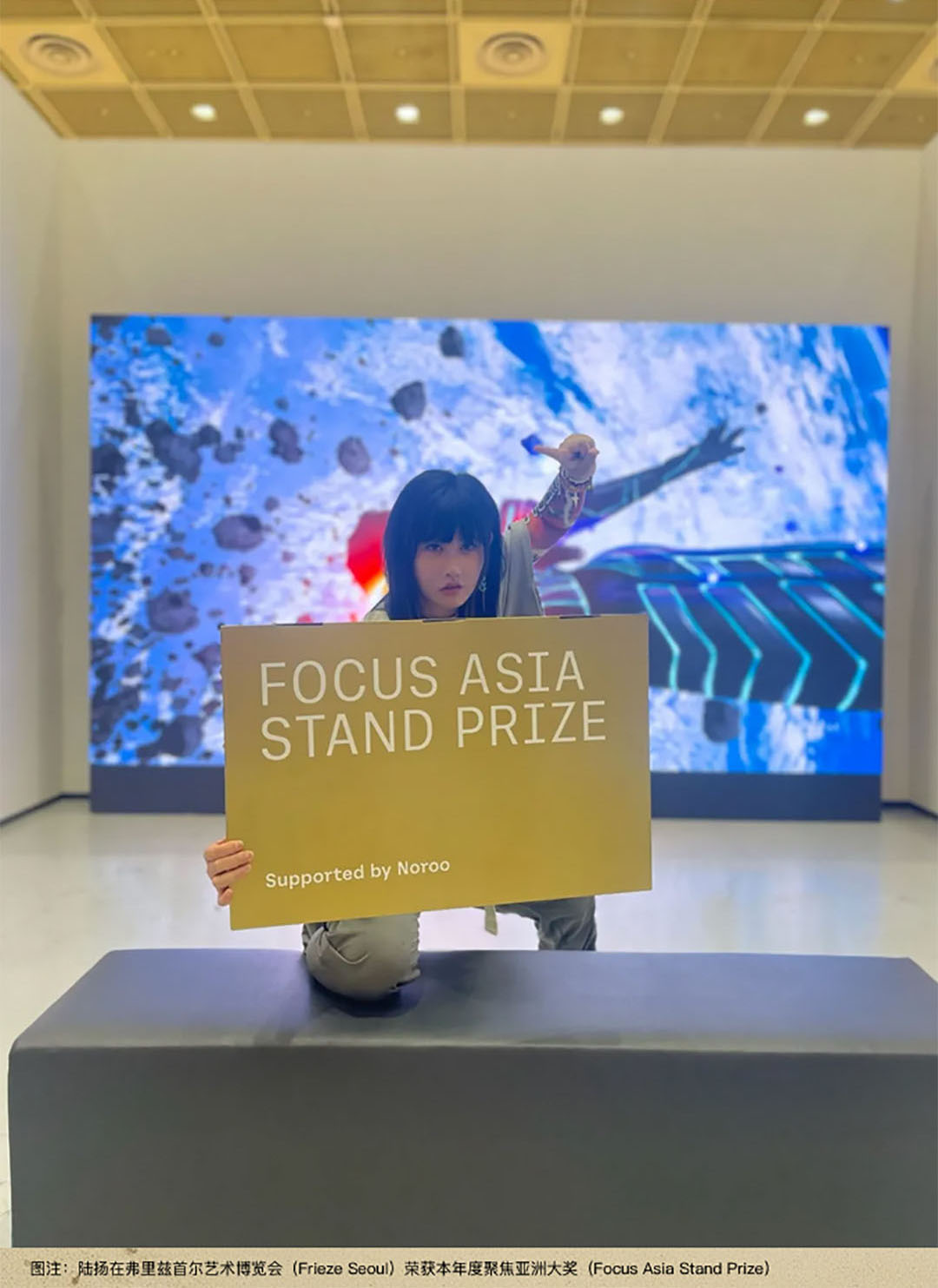
OUIART × Lu Yang
Q: How did this collaboration with the Foundation Louis Vuitton in France begin? We rarely see Chinese contemporary artists having an exhibition in the space of the Foundation Louis Vuitton. Could you please talk about the inspiration behind holding this exhibition?
A:This collaboration began with a premiere event at a German gallery. The Foundation Louis Vuitton noticed the "DOKU" series. First of all, I don't really have a clear sense of nationality myself. My exhibitions have been more frequent in Europe in recent years. Last year and the year before last, there were several exhibitions in Europe. They didn't care where I came from. Compared to the previous positioning of Chinese contemporary art internationally, this time it feels different. They don't make such clear divisions. I wasn't classified as Chinese contemporary art, but was more labeled as a multimedia artist. Of course, in the future, I also hope to have overseas tours to China. It all depends on the opportunity.
Q:What does "DOKU" mean?
A:It actually comes from a Japanese phrase "Dokusho dokushi", which when combined can be directly translated as "alone, die alone". Essentially, everyone's life journey is solitary. We come to this world alone and will eventually leave it alone.
Q:What new features and expressions does this character DOKU have this time? Compared with the previous first work DOKU - The Self , what core elements have you added to it?
A:The first installment featured many scenes set in airplane cabins—a deliberately confined space, with its narrative closely tied to the social context of that time. In 2020, I actually experienced flying through a thunderstorm myself. That encounter brought me an indescribable "ecstasy"—watching lightning strike terrifyingly close through the plane window gave me a completely new perspective on the world. I began seeking out similar experiences and discovered parallels with astronauts' "Overview Effect" in space.The second installment, DOKU - The Flow, shifts focus to the movement of energy. And there will be third and fourth chapters to come, expanding into the infinite cosmos—something to look forward to.
Q:Your works frequently feature non-binary gender imagery, and recent reports have consistently used "he/him" pronouns when referring to you. What's the reason behind this?
A:Actually, when we're alone, we don't truly contemplate our identity or gender—these are merely labels we're forced to accept in daily life. Yet in reality, our existence far transcends these confines. Our true essence extends beyond the boundaries of gender and identity, unrestricted by geographical or national borders.
Q:Your works incorporate many elements of Buddhist culture and anime, which may not be "easily accessible" to general audiences. What do you hope viewers will feel or take away from your works?
A:To be honest, I don't dwell much on audience reactions because others' perspectives are beyond my control. But I do remember some viewers sitting through nearly hour-long video works, and some even wrote to me afterward to share their feelings. They weren't necessarily praising how visually stunning the works were, but rather expressing how they resonated deeply—this kind of "connection" is perhaps enough.
Q:Your works consistently employ complex digital technologies. How do you view technology's impact on your artistic creation? With the rise of AI, do you feel any sense of crisis or anxiety about "everyone becoming an artist"?
A:Not anxious at all. While technological advancements have indeed democratized art-making—allowing many to easily express their creativity through AI tools—the core of art doesn't lie solely in technical execution. It's about the "essence" of creation, something no technology can replace.
Q:You currently maintain studios in both Tokyo and Shanghai. How do the cultural differences between these cities influence your work? Could you elaborate on your creative experiences in each location?
A:My living rhythms in Shanghai and Tokyo are entirely different. Since most of my production team is based in China, my Shanghai schedule is more intense, involving concentrated "practice" like creating works and constant communication. In contrast, my Tokyo studio is profoundly quiet—it's as if I enter a calmer state of being, with my phone perpetually on silent. I've described myself to friends as "a bottle of murky water" that becomes crystal clear upon returning to Tokyo.
Producer:Tiffany Liu
Planner, Editor:Simone Chen
Interview, Writer:陈元
Designer:Nina
Both the artwork images and the "external object" images are provided by the artist himself



